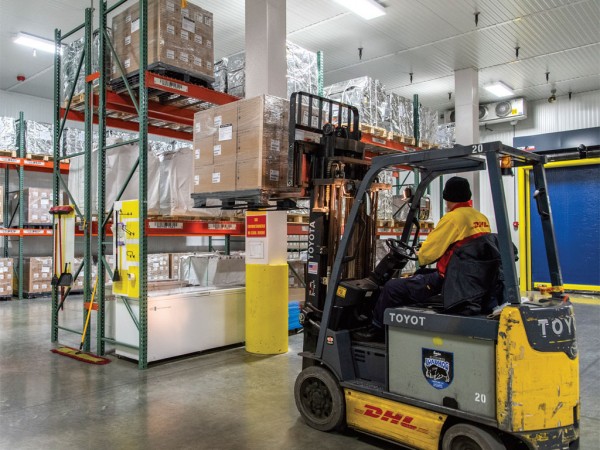Supply chain digitalization to this point is but a prelude to what may be expected over the next few years, if DHL’s strategy is any indication. DHL considers technology offerings a huge opportunity for its own growth. It’s also worth noting that for technology startups, partnering with a global company like DHL provides opportunities to scale up.
Under a program called Strategy 2025, announced last October, Deutsche Post DHL Group plans to invest over $2 billion to bring about digital transformation. The company predicts its digitalization investments will lead to yearly benefits of at least $1.67 billion by 2025.

DHL Supply Chain is also expanding its integration of robotic process automation (RPA) into everyday operations. RPA uses software to automate repetitive tasks such as collecting documents for proof of delivery, scheduling loads, and event tracking, reducing manual error and increasing speed. DHL Supply Chain in North America has offset over 5,000 hours of manual work with RPA, and globally there are over 30,000 hours saved per year during the pilots.
“Before RPA many basic, day-to-day tasks would need to wait to be completed until capacity allowed,” said Jim Monkmeyer, president, Transportation, DHL Supply Chain, North America. “Now they are done quickly and with a high level of accuracy, freeing our employees to spend less time doing busy work and more time doing the strategic value-added work they enjoy.”
New partnerships and more sophisticated robotic process automation (RPA) will produce greater efficiency, reduce operating costs, and improve service levels for customers, Monkmeyer added. RPA is already taking over some back-office processes.
DHL is conducting research to help further shape its digitalization strategy. The company expects to expand its use of augmented reality in warehouses to drive efficiencies in picking and deploying warehouse robots to improve picking times and supporting employees in repetitive tasks such as packaging. New sensors will provide customers with real-time information about the location and condition of their goods, using the Internet of Things.
The 3PL-technology partnerships provide benefits, not only for shippers and the 3PLs, but for the technology companies themselves. They are often early-stage entities, and a partnership with a company like DHL provides an opportunity for greater visibility and expansion.
“They are often focused on taking over their backyards and not thinking of the wider world,” said Gillespie. “We give them a platform to expand. Once we partner with them, it gets them excited about expanding to different regions.”
Technology developments and supply-chain digitalization will only accelerate from here, according to Gillespie. “I’ve never seen change come about as fast as we see it now,” he said. “I’m excited about the technologies that are becoming available.”




